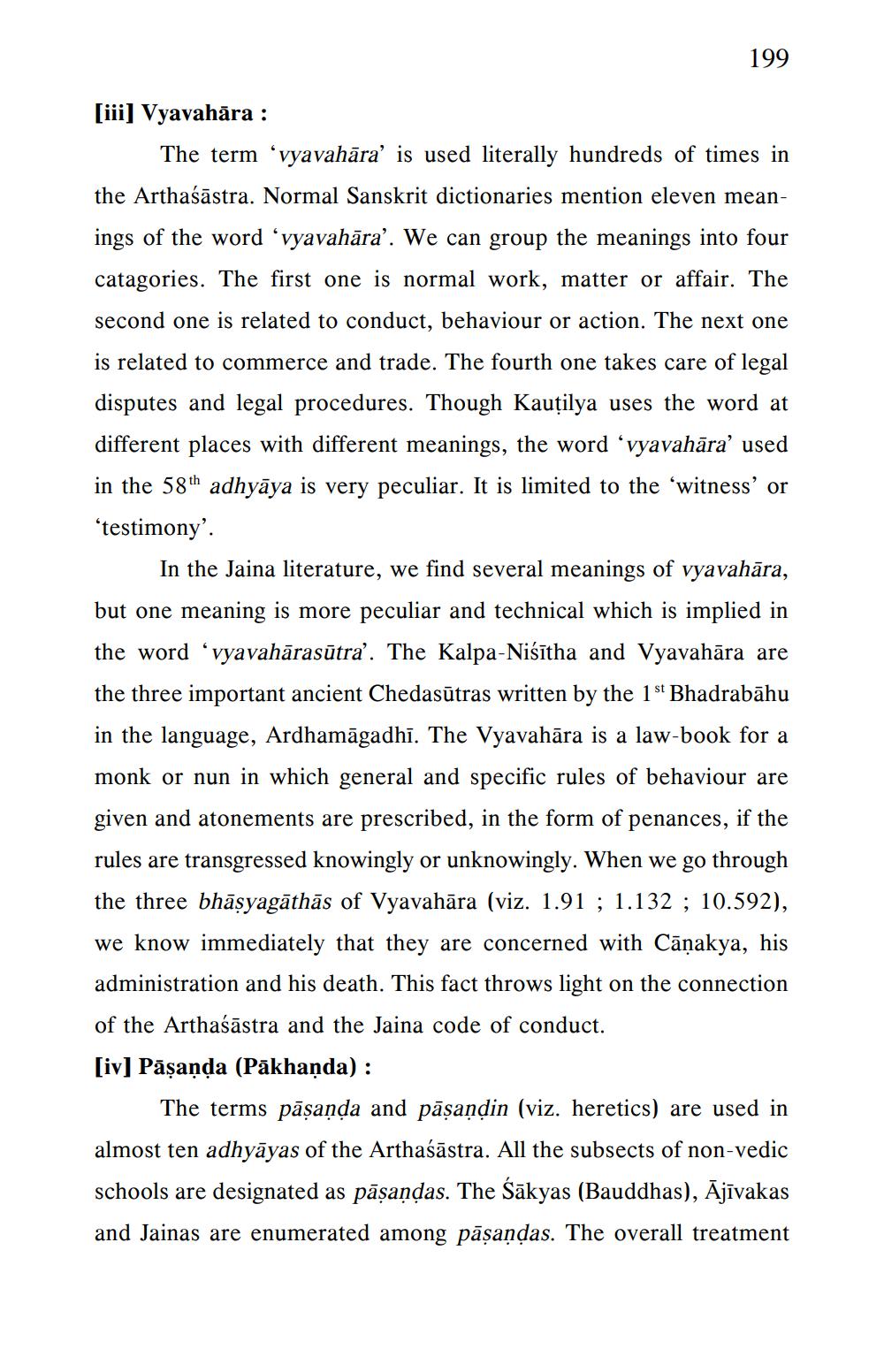________________
199
[iii] Vyavahāra :
The term 'vyavahāra' is used literally hundreds of times in the Arthaśāstra. Normal Sanskrit dictionaries mention eleven meanings of the word 'vyavahāra'. We can group the meanings into four catagories. The first one is normal work, matter or affair. The second one is related to conduct, behaviour or action. The next one is related to commerce and trade. The fourth one takes care of legal disputes and legal procedures. Though Kautilya uses the word at different places with different meanings, the word “vyavahāra' used in the 58th adhyāya is very peculiar. It is limited to the 'witness' or ‘testimony'.
In the Jaina literature, we find several meanings of vyavahāra, but one meaning is more peculiar and technical which is implied in the word 'vyavahārasūtra'. The Kalpa-Niśītha and Vyavahāra are the three important ancient Chedasūtras written by the 1st Bhadrabāhu in the language, Ardhamāgadhi. The Vyavahāra is a law-book for a monk or nun in which general and specific rules of behaviour are given and atonements are prescribed, in the form of penances, if the rules are transgressed knowingly or unknowingly. When we go through the three bhāsyagāthās of Vyavahāra (viz. 1.91 ; 1.132 ; 10.592), we know immediately that they are concerned with Cāņakya, his administration and his death. This fact throws light on the connection of the Arthaśāstra and the Jaina code of conduct. [iv] Pāşanda (Pākhaņda):
The terms pāşanda and pāşandin (viz. heretics) are used in almost ten adhyāyas of the Arthaśāstra. All the subsects of non-vedic schools are designated as pāşaņdas. The Śākyas (Bauddhas), Ājīvakas and Jainas are enumerated among pāşandas. The overall treatment




